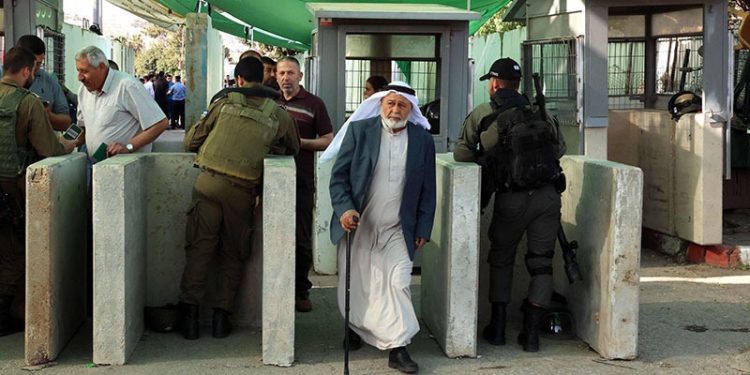In May last year, an 11-day war was fought between Israel and the Hamas, which governs Gaza, following clashes at the Al-Aqsa mosque compound and weeks of civil unrest. Over 250 Palestinians, including 66 children and 13 Israelites, including two children, were killed. An almost identical situation has been created this May as well and nearly 300 Palestinians have been injured in the past two weeks in incursions by Israeli police forces at the Al-Aqsa compound. The possibility of a war like the previous year looms large, but things have not yet escalated to the extent that a bloody confrontation can take place immediately.
Last year, the hardline government of Benjamin Netanyahu was in place in Israel, while this time around the secular government of Naftali Bennett is in charge of the administration. That makes a huge difference in the two different scenarios. The present government is composed of disparate groups, including Right wing, moderate and even Arabs. A novel experiment of an inclusive government is on, though it is on the rocks following the resignation of a Right wing politician that has resulted in a precarious situation for the government which may even collapse when the Israeli parliament, the Knesset, resumes its session soon.
But, the new government has succeeded in good measure in keeping passions under check in the midst of serious provocations from the Hamas for whom the Al-Aqsa mosque is a rallying point for uniting Palestinians against Israel. It goes to the credit of the secular government that it has immediately fielded its foreign minister Yair Lapid to make sure the situation does not go out of hand and bloody confrontation does not erupt through disinformation campaigns by both sides. The 35-acre compound is referred to as al-Haram al-Sharif, or the Noble Sanctuary by Moslems and as the Temple Mount by Jews. The site is in East Jerusalem, which Israel captured in the 1967 Six-Day War and later annexed in a move spurned by most of the international community.
Israel’s incursions into the compound during this Ramadan met widespread condemnation and raised fears of inflaming persistent Israeli-Palestinian tensions across Jerusalem. But Israel has insisted it has been compelled to act against operatives from Hamas and the Islamic Jihad groups. It says armed members threaten Moslem worshippers at Al-Aqsa and Jews praying at the Western Wall. Israel’s foreign minister wasted no time and stressed that the government is committed to the status quo at the compound, meaning it will adhere to a longstanding convention that only Moslems are allowed to pray there. Moslem leaders have, however, been angered by a recent spurt in visits by Israeli devotees in connection with the Jewish religious event of Passover. Some voiced fears that Israel was seeking to divide the compound and create a space where Jews may worship. Lapid scoffed at the suggestion and said no such plan exists.
The marked difference in the handling of the situation by the Bennett government compared to the previous Netanyahu dispensation is that the Israeli police fired rubber bullets to make sure there were no casualties that might have triggered a war with the Hamas which is encouraging Palestinians to assemble at Al-Aqsa to provoke such an eventuality. An uneasy calm has been restored at the compound following the unrest that surrounded morning prayers, but tensions are running high.
The fresh unrest comes as the Ramadan period is over and Israel’s High Court approved the construction of a 31-unit six-storey apartment complex for settlers in the heart of the city. There were almost daily confrontations at the mosque this month when Ramadan overlapped with the Jewish celebration of Passover, which brought hundreds of thousands of Moslems and Jews to the heavily policed site in the Old City. However, the violence has abated this week following the end of Passover and after Israel halted Jewish visits to the huge compound, which is home to the gilded seventh-century Dome of the Rock and the eighth-century Al-Aqsa mosque.
Over the decades, the site in Jerusalem’s Old City has frequently been a flashpoint for violence between Palestinians and Israeli forces and hardline groups. It is a bone of contention and at the heart of competing historical claims. For many Palestinians, the mosque has served as a symbol of their resistance, culture and nationhood. The Temple Mount is a walled compound inside the Old City in Jerusalem and is the site of two structures – the Dome of the Rock to the north and the Al-Aqsa mosque to the south.
The Dome of the Rock is believed to be where the Prophet Muhammad ascended to heaven. To the southwest of the Temple Mount, is the Western Wall also known as the Wailing Wall, a remnant of the Second Temple and the holiest site in Judaism. The Al-Aqsa mosque is one of Jerusalem’s most recognised monuments. The mosque’s complex is one of Islam’s most revered locations and the Temple Mount is the holiest site in Judaism.
In such a volatile situation, the Bennett government has tried to rise above partisan politics and till now has managed to control frayed tempers. The future is uncertain as the fate of the government itself is now hanging in the balance.






































